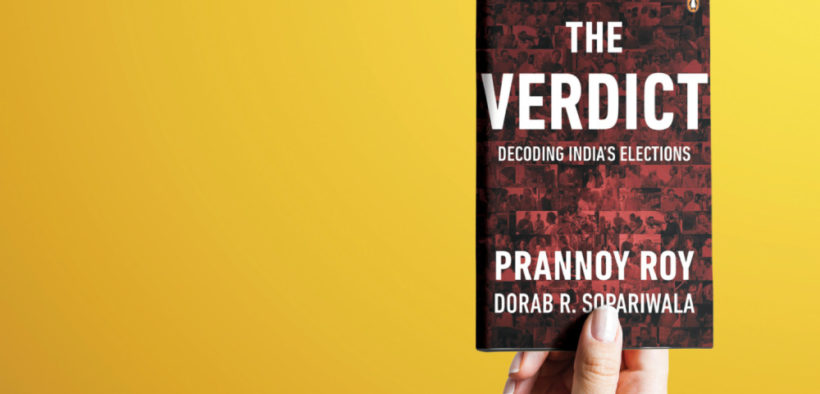The Psephologist Speaks

In the wake of the 17th Lok Sabha elections, no book could possibly be a more fitting read than Prannoy Roy and Dorab Sopariwala’s The Verdict: Decoding India’s Elections. The book analyses the relationship between the voter and the politician, and the dynamics of voting in the making of the government in the largest democracy in the world. Prannoy Roy is often dubbed as the person who introduced India to psephology, the science of elections. Roy’s coverage of the Indian elections on NDTV, the channel established by him along with wife Radhika Roy, is one of the most exciting election programmes that Indians look forward to. Sopariwala is Roy’s colleague, a market researcher and editorial adviser to NDTV, who is avidly interested in opinion polling in India.
In a timely arrival, The Verdict: Decoding India’s Elections brings a new understanding to the complicated, confusing world of elections in the world’s largest democracy.
By Christina Tom Jose
Together, the duo has presented a comprehensive and scientific scrutiny of the making of the government in the world’s largest democracy. The book presents the absurd, at times surprising, realities that surround the electorate in India. For example, although the turnout of women voters has increased by 20 per cent from 1964 to 2014, 21 million eligible women voters—a massive number, by any count—are missing from the voter registration lists. Needless to say, the participation of these women could drastically alter the election results in a completely different direction. The authors call out this phenomenon of ‘voter suppression,’ which according to them is not different from what happens in the US and other democracies. Contrary to what people may think, women in rural India do not always vote according to what their husbands dictate. “He may think that I listen to him about whom to vote for, that’s in his dreams. I vote for exactly whom I want to vote for,” says a woman, who is quoted in the book.
A whole section of the book is dedicated to the advantages and disadvantages of the current polling system in India. Ever since the shift to electronic voting machines, there have been speculations about the possibility of EVMs being meddled with, in order to influence results. The book discusses such apprehensions at length. It also warns the reader to demarcate between fake opinion polls and trusted polling agencies, especially those that have proven a 97 per cent accuracy rate of predicting the result from the made-up polls often seen on social media. With its eye-opening revelations, The Verdict is a must-read for everyone who wishes to make sense of the seemingly chaotic fiasco that is the great Indian elections.
















